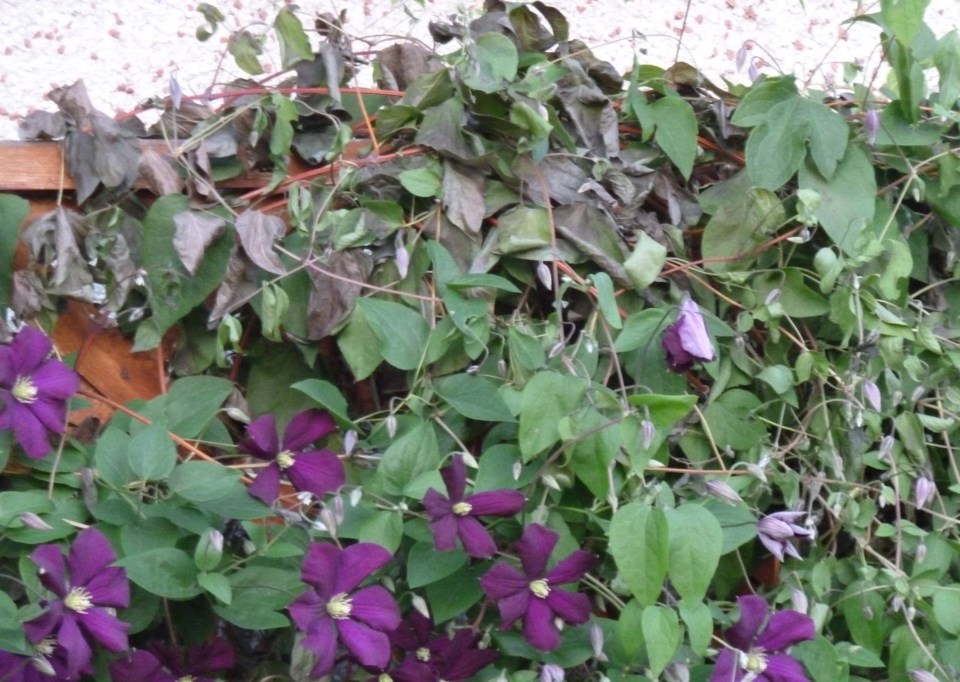Each week, Susan Richards of New North Greenhouses answers your gardening questions. Have questions about your gardening needs? Please email her at [email protected]
Barbara: I purchased a variety of different clematis last fall. Now I need to know how to care for them. Thank you.
I can give you some general clematis information but more detailed advice would depend on the varieties you have.
In spring once the ground is workable, carefully clear all debris from around the vines and reapply mulch over the roots if necessary. Clematis like to grow in the sun but their roots like cool soil. They enjoy their root area shaded by other plants too.
If you are unsure which pruning group your clematis belongs too, don't prune anything except broken vines until you see where new growth is emerging from. Those that have the top growth die and only have new growth beginning at the base are prune about 12" from the ground. Clematis that have new growth starting on old wood are very lightly pruned.
Work Clematis Food into the soil at the recommended rate at the first sign of active growth. Be very careful working around the roots of the clematis. They are particularly susceptible to damage.
Also be careful not to damage the stems. If there is a crack in the woody stem, disease spores can enter. Clematis wilt is a common bacterial disease that clogs the tubes that carry water from the roots to the leaves. A healthy clematis can all of a sudden wilt and die.
Steph: I made my first vegetable garden last year and my favourite thing was the zucchini. However I lost about 60 per cent of my zucchini before it even grew to a harvest-able size. It would yellow out and rot from one end. Any suggestions?
The most common reason for a female zucchini flower to fail to produce a viable fruit is lack of adequate pollination. The zucchini will start to form but stop, turn yellow and rot.
There are both male and female flowers on each zucchini plant. If bees and other pollinators aren't around to carry enough pollen from the male flower to the female flower, fruit can't set properly. In my garden area, I think it's too exposed and windy. My neighbour grows zucchini with great success in a more sheltered spot.
This link takes you to an article that explains the process very well.
JoAnn: What kind of gardening soil is best for a raised garden bed?
You want to create a light weight, porous, nutrient rich material that crumbles easily. This will allow for good root penetration as well as retention of water and oxygen.
Most recipes that you find online recommend 1/3 peat moss, 1/3 compost and 1/3 coarse vermiculite. The problem these days is that coarse vermiculite is extremely hard to come by. The dust is considered a health hazard due to the possibility of inhaling and creating lung aggravation.
